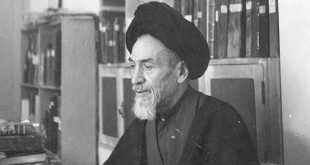Shi‘i commemorations exemplify a peculiar phenomenon among world religions: in Shi‘i Islam, one of the most important annual religious holidays is not a joyful celebration but a day of intense sorrow.
During the holiest days of the year for a Shi‘i Muslim, mourning rituals are used to commemorate the murder of the Prophet Muhammad’s grandson and his companions. Substantial research on these holy days has been published, but most of it focuses mainly on later developments in the evolution of the rituals, their central role in Shi‘i communal identity, and the expressions of them in various communities in South Asia. In the following article I examine the evolution of these mourning rituals developmentally, focusing primarily on the earliest periods in Islamic history and on the central Islamic lands in the vicinity of what is modern Iraq. I use classical Islamic literary sources to trace the historical origins of these mourning rituals, discover why they became so integral to the Shi‘i community’s belief system at such an early stage, and understand how these early developments set the stage for later transformations.
To understand why Shi‘is participate in these rituals, one must first know what it is that they are mourning. Historical sources all agree that in the year 61 AH/680 CE, Husayn b. ‘Ali b. Abi Talib, the grandson of the Prophet Muhammad, refused to give his allegiance to Yazid b. Mu‘awiyah, who was appointed heir to the caliphate by his father, Mu‘awiyah. Many at the time believed this appointment to be illegitimate because none of the previous caliphs since the death of Muhammad were appointed by dynastic succession and all were at least nominally accepted by the majority of the Muslim population. Yazid’s ascension represented the first instance of dynastic succession in Islam and established the Umayyad dynasty. Husayn and a small band of loyal followers protested this unprecedented and apparently un-Islamic claim to leadership by refusing to give their allegiance. As a result, Husayn, his seventy-two male followers, and their women and children were surrounded and besieged for three days on the desert sands of Karbala, near the banks of the Euphrates River. Deprived of water during the siege, Husayn and his band were attacked by at least 10,000 (and in some accounts, as many as 100,000) Umayyad soldiers. On the tenth day of the month of Muharram (a day now commonly referred to as Ashura), Husayn and the seventy-two men were dismembered and decapitated, and the women and children were taken prisoner. The battle was much more than the slaughter of a small band of pious loyalists faithful to the family of the Prophet by an overwhelming military force. It was also an ideological battle between a group of principled individuals and a militarily powerful political administration, making Husayn the ultimate tragic hero figure. Moreover, the fact that Husayn was already perceived to have been a holy figure and Yazid a corrupted and irreligious powermonger only adds to the battle’s religio-political significance. Thus the events of the Battle of Karbala not only exemplify some of the most powerful and emotional aspects of drama and fiction, but their historicity only multiplies their significance for those Shi‘i Muslims who identify themselves as Husayn’s followers….
Bibliographic Information
Title: The Mourning of History and the History of Mourning: The Evolution of Ritual Commemoration of the Battle of Karbala
Author(s): Ali J. Hussain
Published in: Comparative Studies of South Asia, Africa and the Middle East, Vol. 25, No. 1, 2005
Language: English
 Ijtihad Network Being Wise and Faithful Muslim in the Contemporary World
Ijtihad Network Being Wise and Faithful Muslim in the Contemporary World

